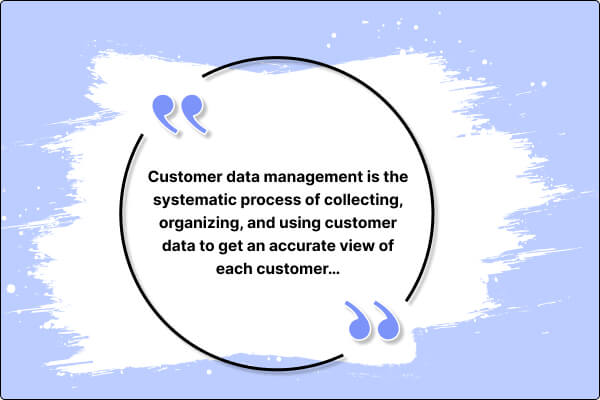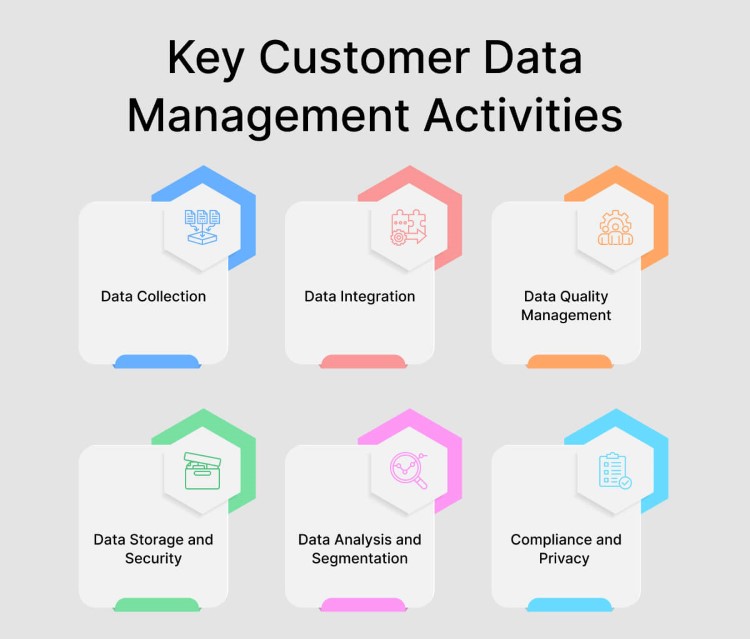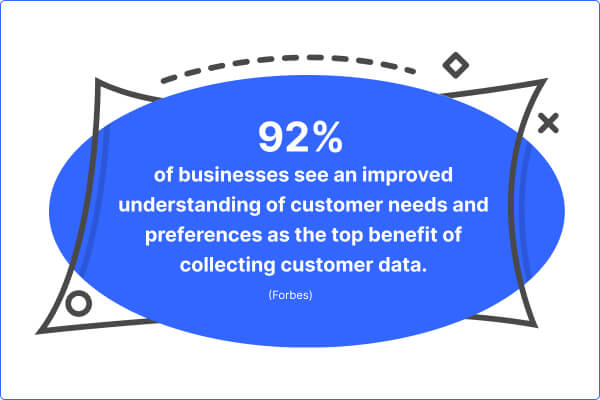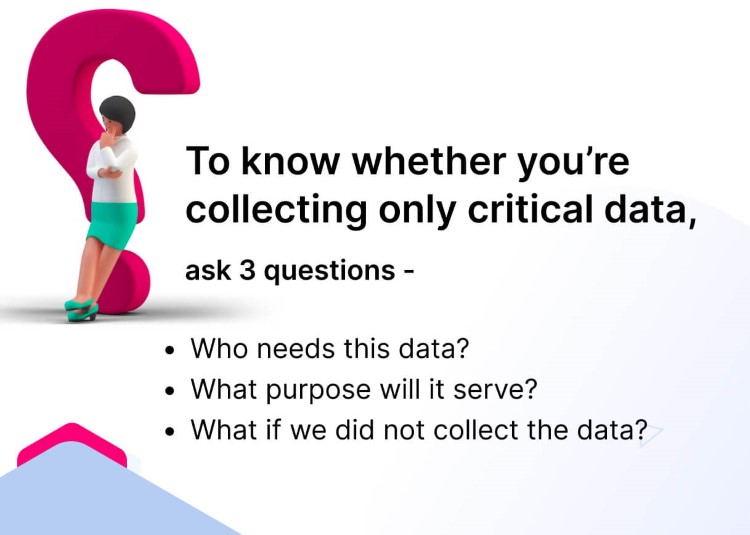Customer Data Management – Benefits, Best Practices & Popular Platforms
- May 30, 2023
- 11 mins read
- Listen

Table of Content
Consumer data is a valuable resource for organizations as it can help in making smarter business decisions. However, most companies suffer from data inaccuracy as they lack a proper data management strategy in place. While some are collecting the data in the wrong way, others are not able to manage it properly. All this leads to too much useless data that can create confusion at various levels and may also pose data security issues.
A good customer data management strategy is key to not only strengthening customer communication but also ensuring great experiences across the customer journey. When the data collection and data management are error-free, they can always add to the bottom line. On the contrary, a faulty customer data management system could erode customer trust in your brand, resulting in a loss of goodwill and revenue over time.
In this blog, we will explore customer data management in detail, see its definition and benefits, and also understand some best practices and platforms.
But first, let’s get started with understanding what exactly customer data management is…
What Is Customer Data Management?
Customer data management is the systematic process or practice of collecting, organizing, and using customer data to gain an accurate view of each customer. It is done to better understand customers and serve them more efficiently.
The three key elements of customer data management are –
- The tools
- The framework
- Security measures
An organization can use these elements together or separately to collect and manage customer data, which can help increase conversion and retention.
With effective customer data management, a business can enhance customer relationships and provide personalized experiences. Additionally, it can prove helpful in driving targeted marketing efforts. When organizations use up-to-date customer data, they are able to make informed decisions and improve operational efficiency, resulting in better outcomes for the business.
Key Customer Data Activities and Strategies
Customer data management is the sum total of gathering, maintaining, and organizing customer data with the purpose to have an accurate view of each customer. It comprises various activities and strategies that collectively contribute to the systematic management of customer information.
Here are the key activities and strategies that are part of an effective CDM strategy –
- Data Collection – It involves collecting customer data from various sources such as websites, social platforms, surveys, customer interactions, and CRM systems. With data collection, an organization can gather key details such as demographic information and browsing history.
- Data Integration – The purpose of data integration is to combine the different types of data and create a unified view of each customer. When data from various sources are combined and integrated, it gives a complete view and understanding of the customer’s journey with the business.
- Data Quality Management – This activity is done to achieve the consistency and accuracy of data so that they give a complete picture. Here, errors and redundancies are removed through validation and standardization to ensure the quality of the data.
- Data Storage and Security – The goal of data storage and security is to implement a reliable and secure system in place to keep customer data safe. Utilizing standard data storage solutions and implementing robust security measures are key parts of this stage to safeguard sensitive customer information.
- Data Analysis and Segmentation – The customer data thus collected and stored needs to be analyzed and segmented to gain insights. Such an analysis could help give a peek into customer behavior. A business can also identify patterns and then segment customers accordingly for tailored marketing and personalized customer service.
- Compliance and Privacy – Any customer data that is collected should adhere to the standard compliance and privacy to ensure customer privacy. Here, the goal for organizations is to comply with relevant laws such as GDPR and adopt the right procedures and policies for data governance.
Benefits of Customer Data Management
Data-driven companies are 23 times more likely to acquire new clients. This shows how effective customer data management is vital for not only delivering personalized experiences but also for building stronger customer relationships. It can help businesses optimize their operations and benefit from the power of customer insights.
There are several benefits to organizations when they have an efficient CDM in place –
- Collecting, consolidating, and analyzing data from multiple touchpoints can offer a holistic view of customers.
- A business that collects and analyzes customer data is better able to understand the needs, preferences, and behaviors of its customers.
- Customer data is always essential for personalized marketing and tailored offerings.
- Effectively managing customer data is important for segmenting customers based on different parameters such as demographics, search history, and purchase preferences.
- A business can increase conversion rates and drive higher revenue only when it segments customers and offers them targeted marketing campaigns.
- Customer data management is key when it comes to engaging with customers in a meaningful and personalized manner.
- Effective management of customer data is essential for streamlining operations by eliminating data silos and centralizing the data.
- Analyzing customer data vital for is gaining customer insights and making informed decisions related to engagement, marketing, and product development.
- A business can achieve improved cross-channel integration and provide uniform experiences to customers across channels and touchpoints only if it does manage customer data.
Popular Customer Data Management Platforms
There are quite a few popular and powerful customer data management platforms available for organizations that can help them provide key customer insights and analytics. The key is to choose a platform that is the right fit for the specific needs and business goals.
Here are some popular customer data management platforms –
Microsoft Dynamics 365 Customer Insights
It’s a powerful CDM solution that enables businesses to unify customer data and gain actionable insights. Using this tool, an organization can create customer profiles and also leverage its AI-driven analytical capabilities.
Key Features
- It allows connecting and integrating customer data from various sources, including CRM systems, websites, and third-party applications.
- It uses AI and ML capabilities to generate deep insights from customer data.
- Real-time analytics and visualization tools are available.
- Seamless integration with Microsoft Ecosystem is possible.
Salesforce Customer 360
It’s a comprehensive customer management platform that helps businesses unify customer data and create a holistic view. One of the key highlights of this platform is the availability of different tools for analytics, data integration, and segmentation.
Key Features
- It allows for connecting and integrating data from external systems and apps.
- It supports various integration methods, including APIs.
- Real-time data synchronization across connected systems is possible.
- AI-Powered insights to get valuable insights from customer data.
Adobe Experience Platform
It’s a cloud-based data management platform (DMP) that allows businesses to unify and centralize customer data from various sources. Using this platform, it’s possible to create a 360-degree view of the customers across touchpoints and channels.
Key Features
- It can integrate with various data sources, such as CRM systems, and allows data gathering from multiple channels.
- Can allow the aggregation of data from different sources.
- Has AI-powered features that can help in analyzing data patterns and optimizing marketing campaigns.
Customer Data Management Best Practices
Your business needs the right strategy to manage customer data effectively. It’s also important to adhere to the industry norms in data management. There are some rules and principles which if adopted can add great value to your customer data management efforts.
Here are the best practices for customer data management –
1. Develop a Robust Data Management Strategy
Collecting customer data should be a strategic affair. If it’s done without a strategy, all its intended benefits might be lost in transition. The right way is to make a robust strategy for not only collecting but governing the data as well.
- Developing a strategy means standardizing data collection so that all your teams and departments follow the same rules for data collection.
- When data is collected in a strategic manner, it greatly minimizes errors and confusion across departments.
- It’s equally important to validate customer data before making use of them.
The purpose of developing a strategy for customer data collection is to ensure efficiency, quality, and compliance with the entire process. This can minimize risks and errors with data and ensure the real benefits of the data.
2. Focus Only on Critical Data
Not all data would be useful for your organization. So, there is no point in collecting data that strains your customer data platform (CDP) and makes it overloaded. In fact, collecting needless data might also be not liked by your customers.
Every piece of data should be collected with a focus on key aspects, such as –
- Who needs this data?
- What purpose will it serve?
- What if we did not collect the data?
The right strategy is always to collect data that address specific business needs. This will avoid wasting resources on useless data and keep your team focused on critical data only.
3. Prioritize Data Sharing Across Departments
Many businesses lack a proper data governance strategy so they witness data silos. In this situation, different departments collect customer data yet don’t share it with each other. This can lead to confusion.
Data silos are never good for any organization as they show how different teams and departments are not leveraging the data despite collecting it. After all, if data is not shared across departments, not everyone will have a complement understanding of the customer journey and touchpoints.
Sharing data is key for many things, including –
- Making unified customer profiles
- Meeting customer expectations
- Creating personalized marketing campaigns
- Ensuring a better customer experience
4. Give More Emphasis to Data Security
Did you know, 61% of consumers are ready to trust only those companies that use relevant personal information transparently?
Collecting customer data comes with great responsibility. Organizations must ensure that the data is secure and never compromised. The focus should always be on ensuring that customer data is protected from unauthorized access and use.
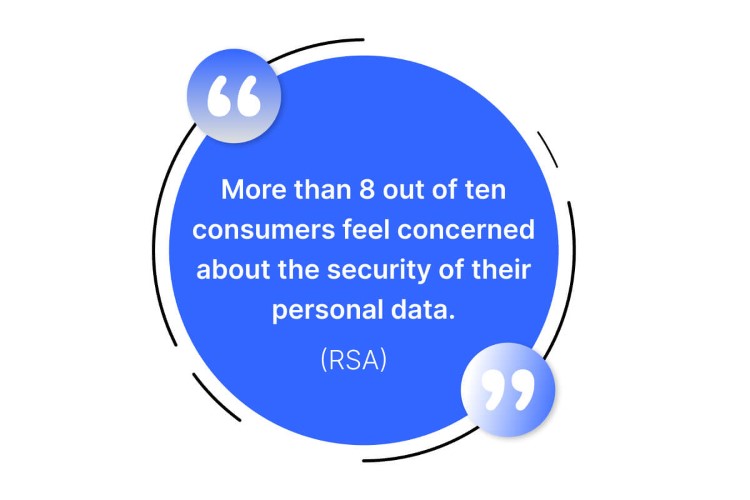
Similarly, customers always expect that the data and information collected from them are safe and away from any breach. To secure customer data, it’s important to use a data platform that follows high-security standards.
The platform you use for customer data must be one that regularly reviews and refines its security practices. If the platform is not improving its security practices, it might not ensure the kind of safety you expect for data.
5. Validate Data for Accuracy
Data decay is natural. It happens over time and can also happen at the point of data collection. Since data changes over time, chances of inaccuracy are always high. When data is not accurate, it shows that the organization lacks a defined data governance strategy in place. Using automatic data validation can help minimize data inaccuracy to some extent.
Validating data on a consistent basis can keep it accurate and also ensure the right information at the disposal. One way to validate data is by clearing up the data of customers your business has not engaged in months.
6. Make Your Customer Data Actionable
One of the essentials of customer data management is to combine different sets of data into a single customer view for a better understanding of the audience. To do this, you can think of combining transaction data with interaction data as it will provide a unified view of the customer.
It’s equally important to keep the data consistent and complete so that teams can take action based on it. When customer data is standardized, it becomes fit for you, resulting in improved efficiency with productivity. You can also automate data management tasks using AI tools and get key insights about customers.
Boost Your Business’ Customer Data Management Capabilities with REVE Tools
Managing customer data is essential for getting a complete view of each customer and personalizing communication at each stage of the journey. When a business manages customer data effectively, it’s able to serve them well, resulting in improved conversion and profits.
We, at REVE Chat, are aware of how customer data holds immense value for an organization and how its management is equally important. We have the right tools and technology that can help businesses in their customer data management journey.
Using our AI-powered chatbot, a company can automate tasks across sales, marketing, and support and gather key customer data without involving any human personnel. In addition, we have visual engagement tools such as video chat and co-browsing software for helping customers in a collaborative manner and ensuring them a great experience.
Our live chat software can be paired with the chatbot to engage customers better and get key data out of such conversations.
Final Thoughts
A powerful customer data management system is vital in today’s time to get a holistic view of your customers and serve them excellently. To manage customer data effectively, it’s important to invest in the latest AI-powered technology and solutions.
This is where REVE Chat tools could prove useful.
You can sign up with us and test our various engagement tools that can also help in getting important customer data.

